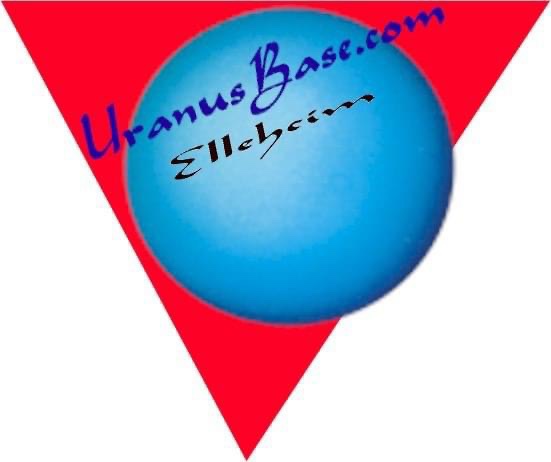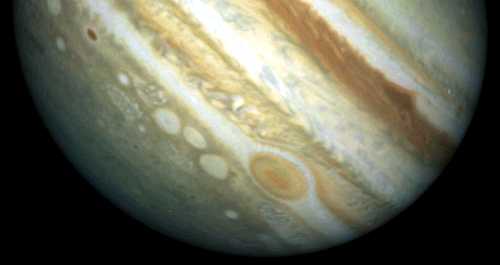


Tony is one of the founding members of Chronicity, Now Chromacity. “TooTall” as he liked to be called at the time, he was instrumental in getting the club going. Originally Uranus Base was called “Ellehcim” like Einahpets was the original name of the Mars Division. The switch to Planet Names came later as the club evolved. “TooTall” was the Security / Sectary of Admirals of the Club. “TooTall” and friends enjoy working on Cars Trucks, as long as its not a FORD. The Masonic Fellowship is where he enjoys most of his free time. We here at Chromacity always wish the best for him.
103 ADMIRAL TONY R. M. URC
104 MEMBER GLENN A. S. URC
019 MEMBER ANDREA P. URC
301 MEMBER BRYAN B. JAKA
313 GENERAL*** CHARITY M. UDAJ-IMM
302 GENERAL** LISA M. UDAJ- IMM
303 GENERAL* KELLY M. UDAJ-IMM
Uranus is the seventh planet from the Sun and the third largest (by diameter). Uranus is larger in diameter but smaller in mass than Neptune.
orbit: 2,870,990,000 km (19.218 AU) from Sun
diameter: 51,118 km (equatorial)
mass: 8.683e25 kg
Careful pronunciation may be necessary to avoid embarrassment; say “YOOR a nus” , not or “urine us”.
Uranus is the ancient Greek deity of the Heavens, the earliest supreme god. Uranus was the son and mate of Gaia the father of Cronus (Saturn) and of the Cyclopes and Titans (predecessors of the Olympian gods).
Uranus, the first planet discovered in modern times, was discovered by William Herschel while systematically searching the sky with his telescope on March 13, 1781. It had actually been seen many times before but ignored as simply another star (the earliest recorded sighting was in 1690 when John Flamsteed cataloged it as 34 Tauri). Herschel named it “the Georgium Sidus” (the Georgian Planet) in honor of his patron, the infamous (to Americans) King George III of England; others called it “Herschel”. The name “Uranus” was first proposed by Bode in conformity with the other planetary names from classical mythology but didn’t come into common use until 1850.
Uranus has been visited by only one spacecraft, Voyager 2 on Jan 24 1986.
Most of the planets spin on an axis nearly perpendicular to the plane of the ecliptic but Uranus’ axis is almost parallel to the ecliptic. At the time of Voyager 2’s passage, Uranus’ south pole was pointed almost directly at the Sun. This results in the odd fact that Uranus’ polar regions receive more energy input from the Sun than do its equatorial regions. Uranus is nevertheless hotter at its equator than at its poles. The mechanism underlying this is unknown.
Actually, there’s an ongoing battle over which of Uranus’ poles is its north pole! Either its axial inclination is a bit over 90 degrees and its rotation is direct, or it’s a bit less than 90 degrees and the rotation is retrograde. The problem is that you need to draw a dividing line *somewhere*, because in a case like Venus there is little dispute that the rotation is indeed retrograde (not a direct rotation with an inclination of nearly 180).
Uranus is composed primarily of rock and various ices, with only about 15% hydrogen and a little helium (in contrast to Jupiter and Saturn which are mostly hydrogen). Uranus (and Neptune) are in many ways similar to the cores of Jupiter and Saturn minus the massive liquid metallic hydrogen envelope. It appears that Uranus does not have a rocky core like Jupiter and Saturn but rather that its material is more or less uniformly distributed.
Uranus’ atmosphere is about 83% hydrogen, 15% helium and 2% methane.
Like the other gas planets, Uranus has bands of clouds that blow around  rapidly. But they are extremely faint, visible only with radical image enhancement of the Voyager 2 pictures (right). Recent observations with HST (left) show larger and more pronounced streaks. Further HST observations show even more activity. Uranus is no longer the bland boring planet that Voyager saw! It now seems clear that the differences are due to seasonal effects since the Sun is now at a lower Uranian latitude which may cause more pronounced day/night weather effects. By 2007 the Sun will be directly over Uranus’s equator.
rapidly. But they are extremely faint, visible only with radical image enhancement of the Voyager 2 pictures (right). Recent observations with HST (left) show larger and more pronounced streaks. Further HST observations show even more activity. Uranus is no longer the bland boring planet that Voyager saw! It now seems clear that the differences are due to seasonal effects since the Sun is now at a lower Uranian latitude which may cause more pronounced day/night weather effects. By 2007 the Sun will be directly over Uranus’s equator.
Uranus’ blue color is the result of absorption of red light by methane in the upper atmosphere. There may be colored bands like Jupiter’s but they are hidden from view by the overlaying methane layer.
 Like the other gas planets, Uranus has rings. Like Jupiter’s, they are very dark but like Saturn’s they are composed of fairly large particles ranging up to 10 meters in diameter in addition to fine dust. There are 11 known rings, all very faint; the brightest is known as the Epsilon ring. The Uranian rings were the first after Saturn’s to be discovered. This was of considerable importance since we now know that rings are a common feature of planets, not a peculiarity of Saturn alone.
Like the other gas planets, Uranus has rings. Like Jupiter’s, they are very dark but like Saturn’s they are composed of fairly large particles ranging up to 10 meters in diameter in addition to fine dust. There are 11 known rings, all very faint; the brightest is known as the Epsilon ring. The Uranian rings were the first after Saturn’s to be discovered. This was of considerable importance since we now know that rings are a common feature of planets, not a peculiarity of Saturn alone.
Voyager 2 discovered 10 small moons in addition to the 5 large ones already known. It is likely that there are several more tiny satellites within the rings.
Uranus’ magnetic field is odd in that it is not centered on the center of the planet and is tilted almost 60 degrees with respect to the axis of rotation. It is probably generated by motion at relatively shallow depths within Uranus.
Uranus is sometimes just barely visible with the unaided eye on a very clear night; it is fairly easy to spot with binoculars (if you know exactly where to look). A small astronomical telescope will show a small disk. There are several Web sites that show the current position of Uranus (and the other planets) in the sky, but much more detailed charts will be required to actually find it. Such charts can be created with a planetarium program such as Starry Night.
Uranus’ Satellites
Uranus has 21 named moons and six unnamed ones:
- Unlike the other bodies in the solar system which have names from classical mythology, Uranus’ moons take their names from the writings of Shakespeare and Pope.

- They form three distinct classes: the 11 small very dark inner ones discovered by Voyager 2, the 5 large ones (right), and the newly discovered much more distant ones.
- Most have nearly circular orbits in the plane of Uranus’ equator (and hence at a large angle to the plane of the ecliptic); the outer 4 are much more elliptical.
Uranus’ Rings
Distance Width Ring (km) (km) ------- -------- ----- 1986U2R 38000 2,500 6 41840 1-3 5 42230 2-3 4 42580 2-3 Alpha 44720 7-12 Beta 45670 7-12 Eta 47190 0-2 Gamma 47630 1-4 Delta 48290 3-9 1986U1R 50020 1-2 Epsilon 51140 20-100
(distance is from Uranus’ center to the ring’s inner edge)
Open Issues
- Why doesn’t Uranus radiate more heat than it receives from the Sun as the other gas planets do? Is its interior cold?
- Why is its axis so unusually tilted? Was it due to a massive collision?
- Why do Uranus and Neptune have so much less hydrogen and helium than Jupiter and Saturn? Is it simply because they are smaller? or because they’re farther from the Sun?
- What will happen to Uranus’s weather as it progresses through its seasons?
Members of Uranus Division were original members of Jaka, United Democratic Alliance of Jaka (UDAJ) , Immaculate (IMM), United Republic of Chronicity (URC)

Uranus is the sky god and first ruler. He is the son of Gaea, who created him without help. He then became the husband of Gaea and together they had many offspring, including twelve of the Titans.
His rule ended when when Cronus, encouraged by Gaea, castrated him. He either died from the wound or withdrew from earth.
Uranus is the ancient Greek God of the Heavens
– the earliest supreme god. He was the father
of Cronus (also known as Saturn in Roman
mythology) and of the Cyclopes and Titans
(predecessors of the Olympian
gods). This is the symbol for Uranus:
Uranus is the seventh planet from the Sun and
the third largest of the nine planets (in size).
Uranus is larger in size but smaller in weight
than Neptune.
Like the other gas planets, Uranus has bands of clouds
that blow around rapidly. Uranus’ bands are very, very
faint. They can only be seen with special treatment of
pictures obtained by the Voyager 2 spacecraft. Here are examples of what Uranus
looks like before and after image enhancement.
Uranus’ blue color is the result of a gas called “methane” found in
the planet’s upper atmosphere. Uranus may have colored bands
like Jupiter’s, but they are hidden from view by the overlaying
methane layer.
Like the other gas planets, Uranus has rings.
Uranus’ rings are very dark like Jupiter’s rings. The rings are
made up of fairly large particles ranging up to 10 meters
across in addition to fine dust – much like the rings of Saturn.
There are 11 known rings, all are very faint. Uranus’ brightest ring is known as the
“Epsilon” ring.
Look for Uranus! Uranus is sometimes just barely visible with the naked eye on a
very clear night; it is fairly easy to spot with binoculars (if you know exactly
where to look). A small astronomical telescope will show a small disk.
~ Uranus is a giant gas planet which is made up of mostly rock and various ices.
~ Uranus has been visited by only one spacecraft, Voyager 2 on Jan 24 1986.
~ Uranus spins differently from most planets. It seems to be tilted “sideways” instead of
right-side up. At the time of Voyager 2’s passage, Uranus’ south pole was pointed almost
directly at the Sun.
~ Uranus has 15 known moons. Voyager 2 discovered 10 small moons in addition to the 5
large ones already known. It is likely that there are many more tiny moons within the rings.
Members of Uranus Division were original members of Jaka, United Democratic Alliance of Jaka (UDAJ) , Immaculate (IMM), United Republic of Chronicity (URC)
